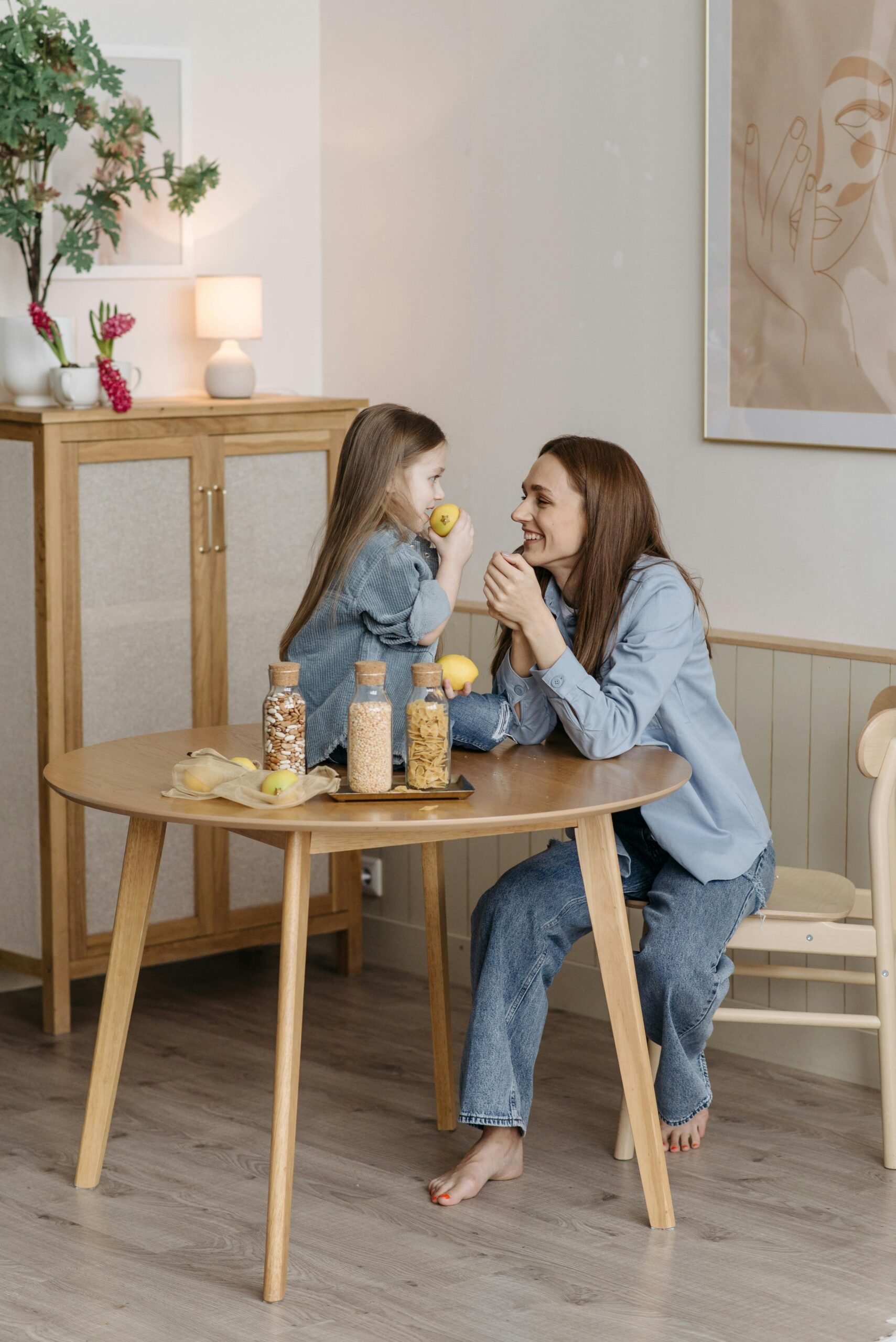
How to Satisfy your Emotional Needs through Inner Child Work
Introduction
Hello and welcome! Today we are doing important work so lets get straight to the point! When you leave today you will have gained a better understanding of how to support your own emotional needs. You will also have built up a better understanding of how you can believe in yourself and trust yourself. This will be through a unique, extremely important inner child work activity. This activity will involve developing a conscious and constant internal dialogue between your inner child and the adult part of yourself. It may sound confusing to you at the moment but hang in there because this is game-changing!
A Constant Dialogue Between Your Adult Self and the Inner Child- The Basics of the Idea
We were all once a child, and that child part of us still exists at the core of us. As we grow older we are no longer the responsibility of our parents. We have to fend for ourselves in this world! It is therefore our own responsibility to protect ourselves. This is why we develop adult qualities. We always need a parent; it is simply that we shift into the ability to ‘parent’ ourselves as we get older. The adult part of us is our ‘protector’. What many of us seem to forget is that while we develop this ‘adult layer’ to us, the child in us still exists at our core. That child has qualities, wishes, and needs that can sometimes be overlooked or clouded over by a lack of mindfulness.
Think of it as a child at the core of us holding our pure, innocent, vulnerable, true essence, with an outer layer of ‘adult’. That ‘adult layer’ is responsible for protecting us. These two parts of us hold different qualities. In some of us there can be an imbalance where the needs of one of these parts are neglected. When we develop a conscious dialogue and connection between these two parts of ourselves, we can fulfil our emotional needs. We can unleash our true essence – the untainted essence of our inner child. We can also protect ourselves effectively and work towards our full potential. This is the result of a healthy and balanced ‘adult layer’ that is well connected to our true values. This constant dialogue helps us to function in the most effective way so that we can learn to trust ourselves.

The Child Part of Ourselves
The child part at the core of us holds our untainted, undisturbed pure character and essence. That is the essence given to us, undisrupted by harmful beliefs, and the perversion in the world. We are all born with a temperament and this temperament is pure. All of our qualities are neutral and can be channelled in either a negative way or a positive way (depending on the decisions we make). Even qualities like jealousy can be channelled in a positive way. The child part of us has integrity and vulnerability, laughter, and joy. The child at the core of us also has a need to be safe and protected.
The Adult Part of Ourselves
Our ‘adult layer’ is the protective part of us. It guards us from getting hurt. This part of us facilitates our safety and fulfilment through hard work, self-control, boundaries, and self- discipline. It also facilitates the continuation of our legacy in this world. It does that through the development of relationships and childbearing, and also through our actions that have an impact on the world.
Unfortunately, so many of us feel unprotected and unsafe at a young age in minor ways (such as by feeling left-out by classmates) or in major ways . We all have an element of the ‘adult layer’ even in childhood.
In childhood, when we are primarily thinking with our ‘child core’ but feel unprotected it can cause problems. This is where we can be vulnerable to developing limiting beliefs and maladaptive protective mechanisms. Our young brains that think primarily with our ‘child core’ try to rely on their thin, under-developed ‘adult layer’. This can result in making poor judgments of one’s surroundings, poor decision making, the list goes on.
For example, a child may feel left out from a group and as a result of a poor judgment conclude that there is ‘something wrong with them’. They may then isolate themselves, feeling unworthy of being accepted as they are. As you can see, this is a confused and faulty way of solving the problem. These false beliefs formed in childhood (e.g. ‘there is something wrong with me’) and poor protective mechanisms (self-isolating) can hold a lot of emotion and be carried into adulthood.
Our ‘adult layer’ becomes more pronounced and developed as we get older. However, poor coping mechanisms and core beliefs formed in childhood do not simply drift away. If we want to change them we must consciously address our beliefs and behaviours, using our new-found adult wisdom.
Additionally, when we are adults we can develop ways of ‘protecting ourselves’ that are more harmful than helpful. This may occur if there is poor communication between the different parts of us (our ‘inner child’ and our ‘adult layer’). This is where a constant dialogue between these two parts of us can help us with supporting our emotional needs and learning to trust ourselves.
So, while this internal dialogue is largely intuitive, here are some specific ways to support your emotional needs more effectively. These activities will also help you with learning to trust yourself.
Satisfying our Emotional Needs – Living by Our Values and Respecting Ourselves
The child at the core of us has certain values, desires and wishes. In this section we will be discussing how we can take a step back to listen to, and honour these wishes. Sometimes the ‘adult layer’ of our brain can get into an anxious frenzy trying to protect us. While the intentions are there, emotion can distort our vision. As a result, we may act in ways that are actually more harmful than helpful. An example of this is where we self-sabotage to ‘protect ourselves’ from failure or rejection. This lead to us creating a life for ourselves that is not aligned with our core values.
In this section we are focusing on fostering communication between the different parts of ourselves so that we can support our emotional needs, respect ourselves, and live by our values.
1) Creating Space to Fulfil our Emotional Needs
Sometimes when there is too much noise in our lives, we cannot hear what we need to hear. Our protective ‘adult layer’ is acting in survival mode and as a result, the wisely intuitive voice of our inner child becomes fainter.
Create space for yourself by actively taking time out to journal and think. Be mindful of your thoughts and emotions, questioning why you are having them. Question whether your thoughts are based on logic or whether they are based on fear. Really allow yourself to sit in stillness. This will help you to gain objectivity so that you are not blind sighted.
You are creating space to hear the desires and needs of the child within you, the child that is pure in vision and intuition. When you do this, you are no longer responding in an anxious frenzy. Sometimes our anxious protective brains can act in a maladaptive way. By creating this space for yourself you are allowing the wise voice of your inner child to be heard.
2) Setting Boundaries to Fulfil our Emotional Needs
Setting boundaries to protect the needs and desires of your inner child is crucial. In order to support your own emotional needs, you must create space and listen to the needs of that child and then take actions by setting boundaries. Once you have created space to listen, you can ask yourself ‘what are my needs and what are my wishes?’ Then ask yourself ‘am I fulfilling these needs in a helpful or a harmful way?’
Once you have identified healthy ways of responding to your emotional needs, physical needs, and social needs, make sure you set healthy boundaries around them to protect yourself. For example, if you have a need to get 7 hours of sleep make sure that you create a boundary for yourself where you do not go out past a certain time of night (of course it is also important to be considerate of those close to you when deciding on these boundaries).
If you have a need to feel loved and accepted by the people around you, set boundaries for yourself where you do not spend a lot of time with friends who make you feel unloved or unaccepted. If you have a need to have alone time to regain energy, you can fulfil your emotional needs by setting aside time for yourself to recharge.
Remember to try and nurture the boundaries for yourself that you would create for your own child. Remember that you are your child.
Through setting these healthy boundaries you are listening to the child at the core of you. You are also creating space for the adult part of you to protect you in a healthy and adjusted way. Through this, you are fostering an environment where trusting yourself and fulfilling your emotional needs flows naturally.
3) Prioritising our Child to Fulfil our Emotional Needs
If you were a parent, you would not leave your child hungry, upset or suffering. That would be neglect. Parents prioritise the needs of their children before the needs of anyone else. Try to do the same for yourself and remember that you cannot pour from an empty cup. Once you have fulfilled your basic needs – physical, emotional, mental, and social, you can then move on to trying to help others meet their needs.
4) Honouring our Values to Fulfil our Emotional Needs
The child at the core of us has certain values and by going against these values we fail to support our emotional needs. This is because when we go against these values, we disrupt our internal peace. Some of us are so disconnected from the honesty and purity of our inner child that we do not even realise how much we are harming ourselves.
Honour your values by not letting anyone else walk over them. For example, if your inner child does not value and does not feel safe with you getting blackout drunk, don’t give in to peer pressure and have too many drinks. If your inner child does not value you self-sabotaging career goals, do not turn down job opportunities thinking that you are unworthy of them.
Your inner child is also likely to value being in a state of serenity. So, if you feel as though you have too much stress in your life and you are overwhelmed or anxious, take action. Seek support from those around you, get a therapist, or take time out to recuperate and rejuvenate. These are just a few examples of how you can support your emotional needs. When you can support your emotional needs, you will trust yourself and your ability more. You will in turn be more confident.
Satisfying our Emotional Needs – Wisdom Exchange and Effective Problem Solving:
Both the child and the adult parts of you have great wisdom. The child at the core of you is pure and contains your true essence. The child part of you is also more open, sincere, trusting, and spontaneous. The adult layer is protective, caring, goal-orientated, self-disciplined, strong, and capable. When you consciously allow the adult part of yourself and the child part of yourself to interact effectively, you can support your emotional needs to the highest level. You can really start to trust yourself.
1) Solving Problems to Fulfil our Emotional Needs
Problem-solve by combining the wisdom of the different parts of yourself. When you have a complex emotional problem, try to break down the problem.
To do this, start by creating space and quiet so that you can think undisrupted, accessing your inner child. Then, try to identify the core need of the child inside of you. Once you have done that, use the adult part of yourself to try and find the most effective solution. When you are thinking using this adult part of your brain, try to adopt an objectively detached thought-process.
Sometimes our adult brains can overcomplicate issues or try to ‘fix’ our problems in ways that are harmful. For example, if you feel sad sitting at home on your own, try to identify your core need. In this situation you are feeling lonely, and your core need is to feel loved and connected. By adopting this adult problem-solving lens you will jump to finding a good solution. For example, by calling a friend or family member. If this is not possible, you can decide to go to a cafe alone, or go out on a walk. Even the small exchange of smiling at people can make you feel uplifted and more connected.
By using this process, you are supporting your emotional needs. If you had not broken this problem down, you may have fallen into unhelpful ‘protective’ coping mechanisms. These could include dwelling in negativity, isolating yourself from the world even more, or using unhelpful coping mechanisms like binge eating to try and feel better.
2) Wisdom Exchange to Fulfil our Emotional Needs
There is wisdom in both parts of us (child and adult). Through the difficult challenges of life, some of us cut off the deep wisdom of our inner child. It is completely shut down and we are disconnected from ourselves. We unintentionally ignore our true desires, values, direction, and essence. We are clouded over with unhelpful protective mechanisms like self-sabotage, overworking…
The opposite is also true, some of us have shut off the adult side of ourselves and as a result we feel victim to the world, helpless and unsafe. Connecting and activating both of these sides of ourselves can make us act wiser overall. Acknowledging that both parts are important can help us lead a freer life of more harmony where we can meet our emotional needs and trust ourselves to show up for us on every level.
Satisfying our Emotional Needs- Creating a Safe, Nurturing Environment:
The role of our adult layer is also to create a safe, warm, and nurturing environment for ourselves. This is a huge part of fulfilling our emotional needs. When we create this safe environment for ourselves, we are able to trust ourselves enough to thrive. When we feel safe we are also more likely to take measured risks and try new things. This can can result in tremendous growth.
1) Using our Love Language to Fulfil our Emotional Needs
There are different ways to create a warm, nurturing environment for yourself. One of the ways to do this is by making yourself feel loved by utilizing knowledge on your love language. You can learn about the five different types of love language here: https://www.healthline.com/health/love-languages#chart.
Have a conversation with yourself where you identify your love language. Think about what your love language was as a child. Your adult self is not only responsible for protecting you, but also responsible for loving and celebrating you. Try to give yourself your love needs. Find a way to feel loved by celebrating your love language with actions. For example, if your love language is gift giving, make sure to buy yourself gifts here and there to say well done. If your love language is words of affirmation, make an affirmation jar and read one out in front of the mirror every day with conviction. Here is one way to make an affirmation jar https://journalswithdragons.com/how-to-make-an-affirmation-jar-from-scratch/.
2) Using Vulnerability to Fulfil our Emotional Needs
When you create a safe environment for your inner child to come out, you will automatically have the ability to be more vulnerable. Vulnerability is one of the core qualities of your inner child. When you feel safe and the adult part of yourself has formed a safe base for you to return to, you find it easier to be more vulnerable. When you allow yourself to be more vulnerable, you allow yourself to grab opportunities and take measured risks without being stopped by the fear of failure. Living a fulfilled life is an important part of satisfying your emotional needs. Allowing yourself to be vulnerable (in a non-dangerous way) is the first step towards a more fulfilled life.
3) Using Guidance in the Right Direction to Fulfil our Emotional Needs
A large part of satisfying your emotional needs is building self-respect. You can do this through self-discipline and goal setting. The adult part of yourself holds the skills of hard work, determination, resilience, and self-discipline.
Sometimes, when the adult part of you is ineffective you lack self-discipline and as a result, do not work towards your goals. This can make trusting yourself extremely feel difficult. Additionally, lacking these developed adult qualities can result in a life that feels unfulfilling. Unfortunately, feeling unfulfilled means that your emotional needs are not being met.
You can overcome this by building up the skills of the adult part of you through raising your consciousness. Set yourself goals, breaking them down into do-able steps. If you set goals that seem impossible, it is likely that you will lose motivation or procrastinate to avoid the difficulty of a goal that seems too difficult. Try to work towards your goals in a measured way where you are celebrating your wins. Try to create balance where you are not overworking. By doing these things you are more likely to associate working with joy and as a result, you are likely to maintain your motivation. When you are motivated, you are likely to be more persistent, increasing the likelihood of you reaching your goals.
If you notice yourself straying from your goals, try to identify why, and problem solve from there. For more information on this refer back to the ‘solving problems’ section. If you feel unmotivated, try to speak to yourself kindly and gently nudge yourself back into place- discipline your inner child in a compassionate way.
5) Fulfilling our Emotional Needs by Reassuring Ourselves
Create a safe and nurturing environment for yourself by reassuring yourself when you are anxious or struggling. When you need to hear words of reassurance, try to give them to yourself. Build up the habit of positive self-talk. The adult part of you is responsible for calming your inner child and keeping a stable level of peace. This is an important part of providing yourself with your emotional needs.
Round-Up and Conclusion:
So, today you have learnt a unique and game-changing inner child work perspective to take away and use. By nurturing a constant dialogue between your inner child and your adult layer you can fulfil your emotional needs, trust yourself, and reach a place of internal harmony and serenity.
I hoped that I was able to help you today. I feel privileged to have you here.
If you want to find out how to embrace your inner child, you read my post on it here https://serenelycreative.com/how-to-be-your-own-hero-by-embracing-your-inner-child-liv/. Creative activities are also great for calming your nervous system and allowing the creativity of your inner child to come out. For a tutorial on how to make a Vintage Scrapbook you can see my post here https://serenelycreative.com/how-to-make-a-vintage-scrapbook-with-coffee-stained-paper/.
Sending love and hugs always,
Serenely Creative




